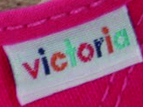Use it or lose it - what qualifies as genuine use?
Trade mark proprietors are often faced with the ultimatum 'use it or lose it', but when asked to provide evidence of genuine use of your mark, how far can your actual use stray from the mark as registered?
Article 15(1)(a) of EU Trade Mark Regulations (the Regulation) allows trade mark proprietors to use their marks "in a form differing in elements which do not alter the distinctive character of the mark in the form in which it was registered" and for such use to support the underlying trade mark registrations. The provision allows trade mark proprietors to modernise their marks and adapt them for different marketing and promotional conditions, as the following General Court (GC) decisions illustrate.
Hyphen GmbH and Skylotec GmbH
Hyphen obtained a trade mark registration for the black and white figurative mark, shown below, in relation to goods and services in classes 3, 5, 9, 24, 25 and 42.

Skylotec filed a non-use revocation action, claiming that hyphen had not made genuine use of their mark over a continuous period of five years.

No.1

No. 2

No.3
At first instance, the Cancellation Division (CD) partially refused the action, finding that hyphen's various uses of the mark (all incorporating a circle device) were sufficient to maintain some of the registration for goods in classes 9, 24 and 25 and services in class 42.
Although hyphen's use was not strictly in the form as registered, the CD held that the additional circle element was not distinctive and therefore did not alter the distinctive character of the registered mark.
Skylotec appealed to the Board of Appeal (BoA) and the registration was revoked in its entirety. The BoA stated that the assessment as to whether hyphen's use was sufficient to support its registration revolved around the distinctive character of the mark as registered, rather than the distinctive character of the addition (the circle). The BoA likened the registered mark to a dumbbell or dog bone, whereas the forms used were akin to a button. As a result, the BoA held that the overall impression of the registered mark was eclipsed by the additional circle element such that the variant forms could not support the registration. Hyphen appealed to the GC claiming the BoA had failed to take proper account of the provision under Article 15(1)(a).
T-146/15 GC judgment
The GC annulled the BoA decision: earlier case law made it clear that it was necessary to analyse the distinctive or dominant character of the added elements when assessing whether use in a form differing from the mark as registered was sufficient. The BoA had made a "random and necessarily inaccurate comparison"' in finding that the forms used resembled a button rather than a dumbbell or bone. The GC reiterated the CD's assessment, that the added component (a circle) was a simple geometric shape devoid of distinctive character which did not alter the distinctive character of the registered mark.
Overall, the GC found that: marks No.1 and No. 2 were equivalent to the mark as registered; mark No. 2, in sky blue, was held not to be particularly original, so did not significantly alter the mark as registered; and whilst mark No. 3 comprised of (i) the registered mark (ii) the circle (iii) stylised words elements "hyphen c", taking account of the relevant sector (the clothing sector), it was not unusual to juxtapose figurative elements with word elements linked to the designer/manufacturer in question. In other words, the registered mark retained its distinctive character whether surrounded by a circle or not.
T-204/14 Victor International GmbH v EUIPO
Gregorio Ovejero Jiménez and María Luisa Cristina Becerra Guibert (the opponents) opposed an application for the trade mark VICTOR on the basis of a number of Spanish marks including the more relevant figurative mark VICTORIA (shown below) for a range of goods in class 25:

The applicant requested evidence of use and the opponents produced various documents including invoices, catalogues, delivery notes and advertisements.




The Opposition Division and later the Board of Appeal found use in relation to "footwear (except orthopaedic)" in Spain and considered there to be a likelihood of confusion, upholding the opposition.
The applicant filed an appeal to the GC challenging the nature of the use of the earlier mark and the evidence submitted. In particular, the applicant argued that the mark was not used in the form in which it was registered and that the additional figurative elements and colours altered its distinctive character. It argued that the mark was weak given that "victoria" is allegedly commonly used as a trade mark in the clothing, footwear and accessories sector.
Use of a mark which does not alter the distinctive character of a registration
In relation to the evidence submitted, the GC reiterated that in order to examine whether the use of an earlier mark is genuine, an overall assessment must be made, taking into account all the relevant factors.
With regard to Article 15(1) of the Regulation and Article 42(2) and (3), proof of genuine use of an earlier national or EU trade mark which forms the basis of an opposition to an EU trade mark application also includes proof of use of the earlier mark in a form differing in elements which do not alter the distinctive character of that mark in the form in which it was registered.
In such situations, where the sign used in trade differs from the form in which it was registered only in negligible elements, so that the two signs can be regarded as broadly equivalent, the above-mentioned provision envisages that the obligation to use the trade mark registered may be fulfilled by furnishing proof of use of the sign which constitutes the form in which it is used in trade.
The GC found that the use of the additional figurative and word elements was of decorative nature only and that the word "victoria" was not weak in terms of distinctive character. The GC found that a common forename can serve as a trade mark if it is capable of distinguishing the origin of goods and services.
In dismissing the applicant's appeal, the GC rejected its argument that the distinctive character of the word 'victoria' is weakened by the fact that, it is commonly used as a trade mark in the clothing sector and for footwear in the territory of Spain.
In short
The purpose of Article 15(1) of the Regulation, according to the court, is to avoid imposing strict conformity between the form of the trade mark used and the form in which the mark was registered, and to allow its proprietor to make certain variations to the mark which, without altering its distinctive character, enable it to be better adapted to the marketing and promotion requirements of the goods or services concerned.
Both cases serve as a welcome reminder that evidence showing use of variations of the mark as registered can still support a trade mark registration. However, it is worth bearing in mind that any additions, or deletions, should not alter the distinctive character of the mark as registered.
Case details at a glance
Jurisdiction: European Union
Decision level: General Court
Parties: hyphen GmbH (applicant) v EUIPO (defendant); Skylotec GmbH (intervener)
Citation: T-146/15
Date: 13 September 2016
Full decision: http://dycip.com/t-14615
Jurisdiction: European Union
Decision level: General Court
Parties: Victor International GmbH (applicant); v EUIPO (defendant); Gregorio Ovejero Jiménez and María Luisa Cristina Becerra Guibert (interveners)
Citation: T-204/14
Date: 07 September 2016
Full decision: http://dycip.com/t-20414
